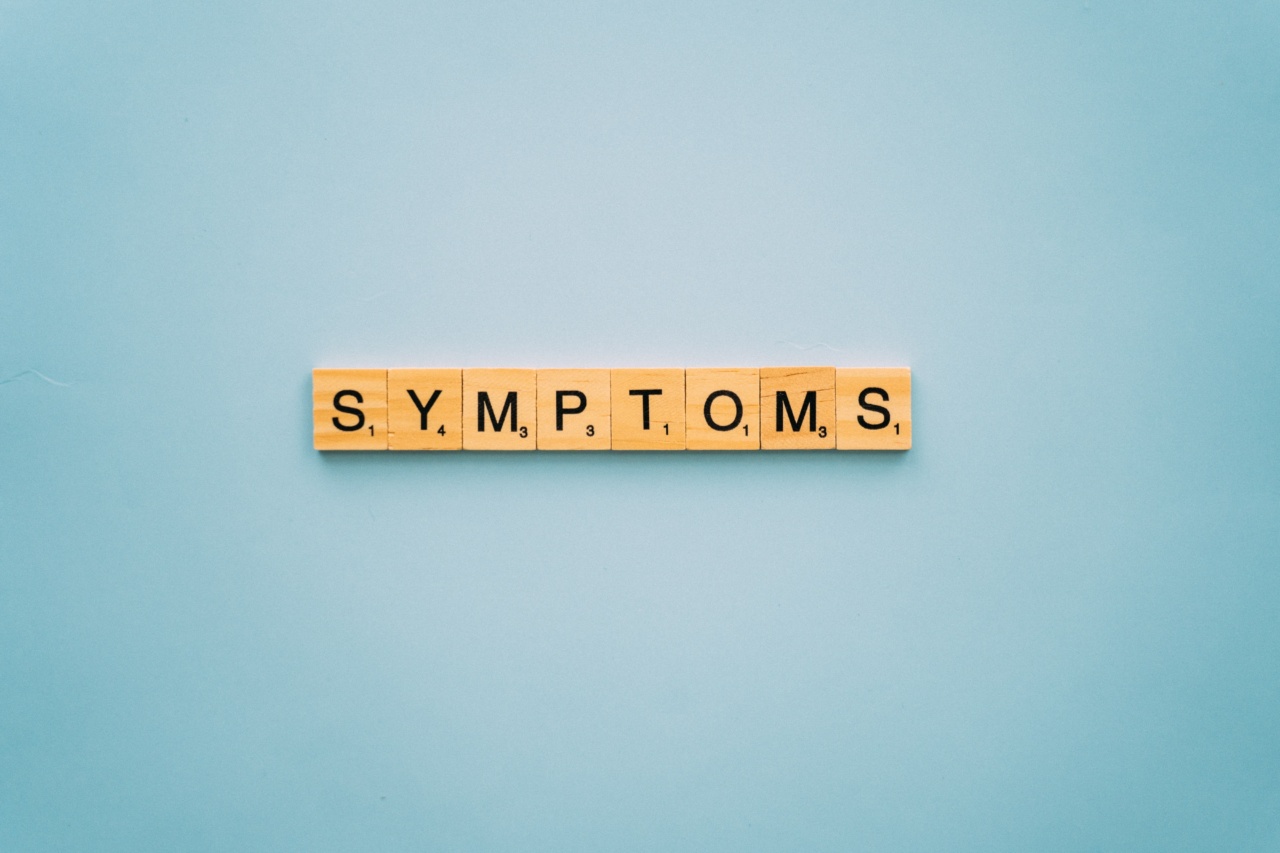Ulcerative colitis is a type of inflammatory bowel disease (IBD) that causes inflammation and scarring in the colon and rectum. It is a chronic disease that can cause a range of symptoms, from mild to severe.
Diagnosis of ulcerative colitis is based on clinical symptoms, laboratory tests, and imaging studies. In this article, we will explore the signs and symptoms of ulcerative colitis and how it is diagnosed.
The Signs and Symptoms of Ulcerative Colitis
Understanding the signs and symptoms of ulcerative colitis is essential for early diagnosis and treatment. The most common symptoms of ulcerative colitis include:.
Abdominal Pain and Cramping
Patients with ulcerative colitis often experience abdominal pain and cramping. This pain can be severe, causing discomfort and disrupting daily activities.
The cramping is caused by inflammation in the colon, which can cause the muscles to contract involuntarily.
Diarrhea
Diarrhea is another common symptom of ulcerative colitis and occurs in more than half of all patients. The diarrhea is usually accompanied by a sense of urgency to have a bowel movement, which can lead to frequent trips to the bathroom.
Blood in the Stool
Blood in the stool is a classic symptom of ulcerative colitis. The inflammation in the colon can cause bleeding, which may appear as red or maroon-colored streaks in the stool. In severe cases, patients may pass large amounts of blood in their stools.
Fatigue and Weakness
Ulcerative colitis can cause fatigue and weakness, which may be due to anemia (a low red blood cell count) caused by bleeding in the colon. Patients may also experience weight loss and a decrease in appetite due to the disease.
Fever
Fever is a common symptom of acute inflammatory bowel disease, including ulcerative colitis. While fever is not present in all patients, it indicates significant inflammation in the colon that requires prompt medical attention.
Joint Pain
Joint pain, also known as arthralgia, is another common symptom of ulcerative colitis. The inflammation that occurs in the colon can produce chemicals called cytokines that travel throughout the body, causing joint pain and inflammation.
Skin Rash
Skin rash is another symptom of ulcerative colitis, although it is relatively rare. The rash usually appears on the arms, legs, or torso and may be accompanied by itching or burning sensation.
Mouth Sores
Some patients with ulcerative colitis may develop mouth sores or ulcers, which can be painful and may make it difficult to eat or drink. The mouth sores may also be a sign of Crohn’s disease, another type of inflammatory bowel disease.
Eye Inflammation
Eye inflammation, also known as uveitis, is relatively rare in ulcerative colitis but can be a concern for patients. Symptoms of eye inflammation include redness, pain, and sensitivity to light.
Uveitis can cause vision loss if left untreated, so it is important to seek medical attention if you experience these symptoms.
Diagnosing Ulcerative Colitis
Diagnosing ulcerative colitis requires careful evaluation of the patient’s medical history, clinical symptoms, and laboratory tests. The following are some of the tests that may be performed to diagnose ulcerative colitis:.
Blood Tests
Blood tests can help identify inflammation and anemia, both of which are common in ulcerative colitis. Doctors may also test for other conditions such as celiac disease or infections that can cause similar symptoms.
Stool Samples
Stool samples can help identify bacterial or viral infections that can cause gastrointestinal symptoms. They can also show signs of inflammation or the presence of blood in the stool.
Colonoscopy
Colonoscopy is a procedure that allows doctors to view the inner lining of the colon and rectum. During the procedure, a flexible tube with a camera on the end is inserted through the anus and guided through the colon.
This allows the doctor to evaluate the extent and severity of the inflammation and to take biopsy samples if necessary.
Flexible Sigmoidoscopy
Flexible sigmoidoscopy is a less invasive version of colonoscopy that allows the doctor to view only the lower portion of the colon.
This procedure is useful for patients who are unable to undergo a full colonoscopy or who have symptoms confined to the rectum and sigmoid colon.
CT Scans or MRI
CT scans or MRI may be ordered in cases where the inflammation is severe or in patients who are not responding to treatment. These imaging studies can help identify complications such as abscesses or fistulas.
Conclusion
Ulcerative colitis can cause a range of symptoms, from mild to severe. Understanding the signs and symptoms of this disease is essential for early diagnosis and treatment.
If you are experiencing symptoms such as abdominal pain, diarrhea, or blood in your stool, it is important to seek medical attention promptly. With prompt and appropriate treatment, most patients can achieve remission and lead a normal life.






























